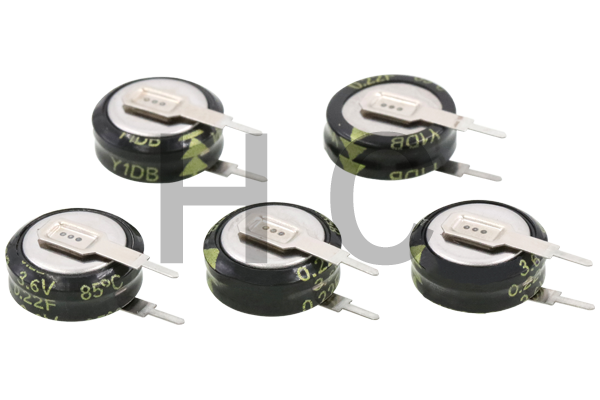Supercapacitors are capacitors with higher capacity than traditional capacitors. Energy is stored by polarizing the electrolyte. It is an energy storage device between capacitors and batteries, which not only has the characteristics of fast charging and discharging of capacitors, but also has the energy storage characteristics of batteries. Supercapacitors have the advantages of long charging and discharging life, fast charging, large capacitance, wide operating temperature range, arbitrary parallel connection to increase capacitance, maintenance-free and more environmentally friendly.

Supercapacitors are classified into electric double layer capacitors, Faraday pseudocapacitors and hybrid supercapacitors. Faraday pseudocapacitor, also known as Faraday quasi-capacitance, is a two-dimensional or three-dimensional space in the living phase of the electrode surface. The electrode active material undergoes underpotential deposition, and a highly reversible chemical adsorption or redox reaction occurs, resulting in a charge potential related to the electrode. capacitance. When the supercapacitor scheme is charged, the ions in the electrolyte diffuse into the solution to the electrode/solution interface under the action of the applied electric field, and then enter the bulk phase of the active oxide on the surface of the electrode through the electrochemical reaction of the interface; if the electrode material is For oxides with larger specific surface area, a considerable number of electrochemical reactions will occur, and a large amount of charge will be stored in the electrode.

When the supercapacitor module is discharged, the ions entering the nitride will return to the electrolyte, and the stored charge will be released through the external circuit. The advantage of the Faraday pseudocapacitor is that under the condition of the same electrode area, the specific capacitance of the Faraday pseudocapacitor is 10-100 times that of the electric double layer capacitor, and at the same time has a larger specific capacitance and energy density. Hybrid supercapacitors use traditional battery electrodes at one end to store and convert energy through electrochemical reactions, and a supercapacitor that stores energy through an electric double layer at the other end.
